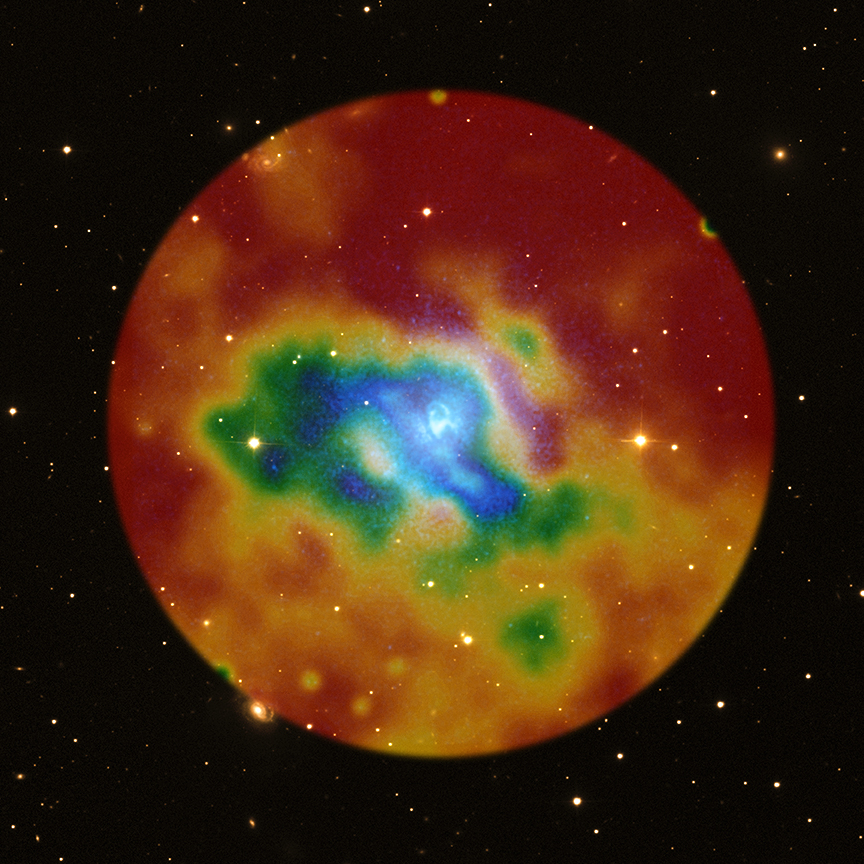

The image above may have a familiar feel to it, but looks are sometimes deceiving, for this featured image is a bit different than those we typically use. Instead of zeroing in on a nebula or a distant galaxy, and showing off its physical features, you can kind of think of this as a weather map of some sorts, taken of an elliptical galaxy found approximately 105 million light-years from Earth.
Called NGC 5813, the galaxy in question belongs to a small galaxy group, and it happens to be the anchor that binds them together. This image essentially represents the weather forecast, particularly the temperature, and the subtle variations of it, of this galaxy group. The hottest regions are depicted in red, whilst the cooler ones can be seen in yellow, blue, green and red (even the coolest are millions of degrees).
A notable feature of this image is the relatively small variation in temperature across the weather map, with a range of only about 30% across several hundred thousand light years. Without any sources of heat, the densest gas near the center of the map should cool to much lower temperatures as energy is lost because of radiation. However, outbursts generated by the supermassive black hole at the center of NGC 5813 provide heat, preventing the gas near the center of the galaxy from cooling to such low temperatures. This decreases the amount of cool gas available to form new stars. This process is analogous to the Sun providing heat for Earth’s atmosphere and preventing water and water vapor from cooling and freezing.
How do outbursts generated by the black hole provide heat? Powerful jets produced as gas swirls toward the black hole push cavities into the hot gas and drive shock waves—like sonic booms—outwards, heating the gas. The shocks from the most recent outburst, which occurred about 3 million years ago in Earth’s time frame, show up as a “figure eight” structure at the center of the image. This is the first system where the observed heating from shocks alone is sufficient to keep the gas from cooling indefinitely. These shocks allow the relatively tiny black hole to heat the huge area surrounding it, as shown here.

The gas around NGC 5813 shows evidence for three distinct outbursts from the black hole, which occurred 3 million, 20 million and 90 million years ago, in Earth’s time frame. The average power of the two most recent outbursts differ by about a factor of six, showing that the power delivered by the jets can vary significantly over timescales of about 10 million years.
[Reference: NASA]